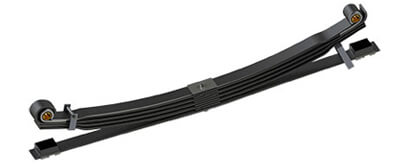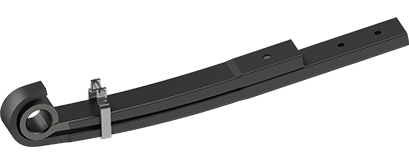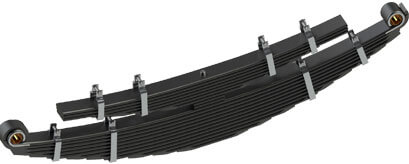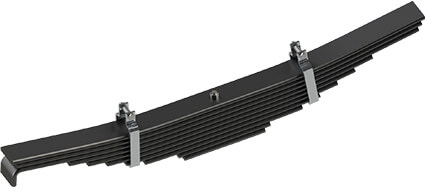
In the world of automotive engineering, suspension systems play a crucial role in ensuring vehicle performance, comfort, and safety. Among these systems, parabolic leaf springs have emerged as a versatile and effective solution for a variety of automotive applications, particularly in trucks, SUVs, and commercial vehicles. This article delves into the utilization of parabolic leaf springs in the automotive industry, exploring their benefits in enhancing handling, stability, and durability across different vehicle types.
Understanding Parabolic Leaf Springs
Before diving into their automotive applications, it’s essential to grasp the fundamentals of parabolic leaf springs. Unlike traditional multi-leaf springs that have a uniform thickness along their length, parabolic leaf springs are characterized by a tapered or variable thickness profile. This design variation contributes significantly to their improved performance characteristics compared to conventional leaf springs.
Applications in Trucks
Trucks, especially those used for heavy-duty purposes such as hauling goods or towing, require robust suspension systems capable of handling substantial loads while maintaining stability and ride comfort. Parabolic leaf springs have become a preferred choice in truck suspension due to their ability to distribute load more efficiently, resulting in enhanced load-carrying capacity and minimized sagging under heavy loads. Additionally, parabolic leaf springs offer better resistance to sagging and deformation over time, ensuring prolonged durability and reliability in demanding trucking operations.
Benefits for SUVs
In the realm of sport utility vehicles (SUVs), where a balance of off-road capability and on-road comfort is essential, parabolic leaf springs have gained popularity for their versatility. SUVs equipped with parabolic leaf springs benefit from improved articulation and wheel travel, enhancing off-road performance and maneuverability over uneven terrain. Moreover, these springs contribute to a smoother ride quality on paved roads, reducing vibrations and enhancing overall comfort for passengers.
Commercial Vehicle Applications
For commercial vehicles such as vans, buses, and utility vehicles, parabolic leaf springs offer a compelling solution to meet the rigorous demands of frequent stop-and-go driving and varying loads. The unique design of parabolic leaf springs helps minimize lateral movement and sway, thereby improving vehicle stability and reducing body roll during cornering and sudden maneuvers. This stability enhancement translates into safer and more predictable handling characteristics, particularly crucial in urban settings and on highways.
Handling and Stability Enhancements
One of the primary advantages of parabolic leaf springs in automotive applications is their positive impact on handling and stability. By distributing load more effectively and minimizing axle hop, parabolic leaf springs contribute to improved traction and control, especially under heavy loads or adverse road conditions. This enhanced stability not only enhances driving confidence but also reduces wear and tear on other suspension components, prolonging the lifespan of the vehicle’s overall suspension system.
Durability and Longevity
Durability is a key consideration in commercial and heavy-duty vehicles, where components are subjected to continuous stress and varying environmental conditions. Parabolic leaf springs excel in durability due to their tapered design, which allows for more uniform stress distribution along the length of the spring. This results in reduced fatigue and deformation, leading to a longer service life compared to conventional leaf springs. Additionally, advancements in material technology, such as high-strength alloys and composite materials, further enhance the durability and corrosion resistance of parabolic leaf springs.
In summary, parabolic leaf spring have revolutionized automotive suspension design by offering a balance of strength, flexibility, and durability across a range of vehicle applications. From trucks and SUVs to commercial vehicles, the utilization of parabolic leaf springs has become synonymous with improved handling, stability, and longevity. As automotive engineering continues to evolve, parabolic leaf springs are poised to remain a cornerstone of modern suspension systems, driving innovation and enhancing vehicle performance for years to come.








